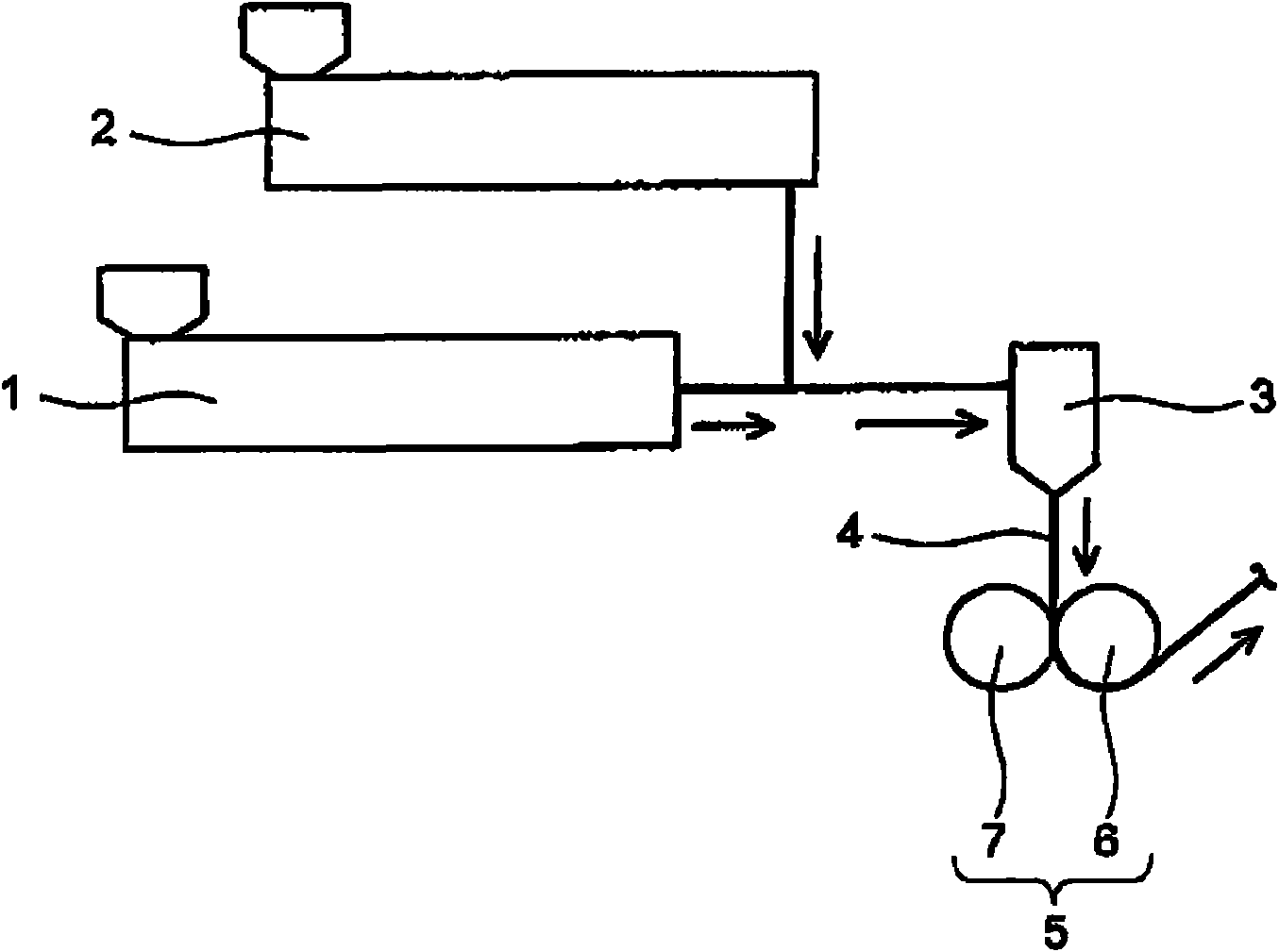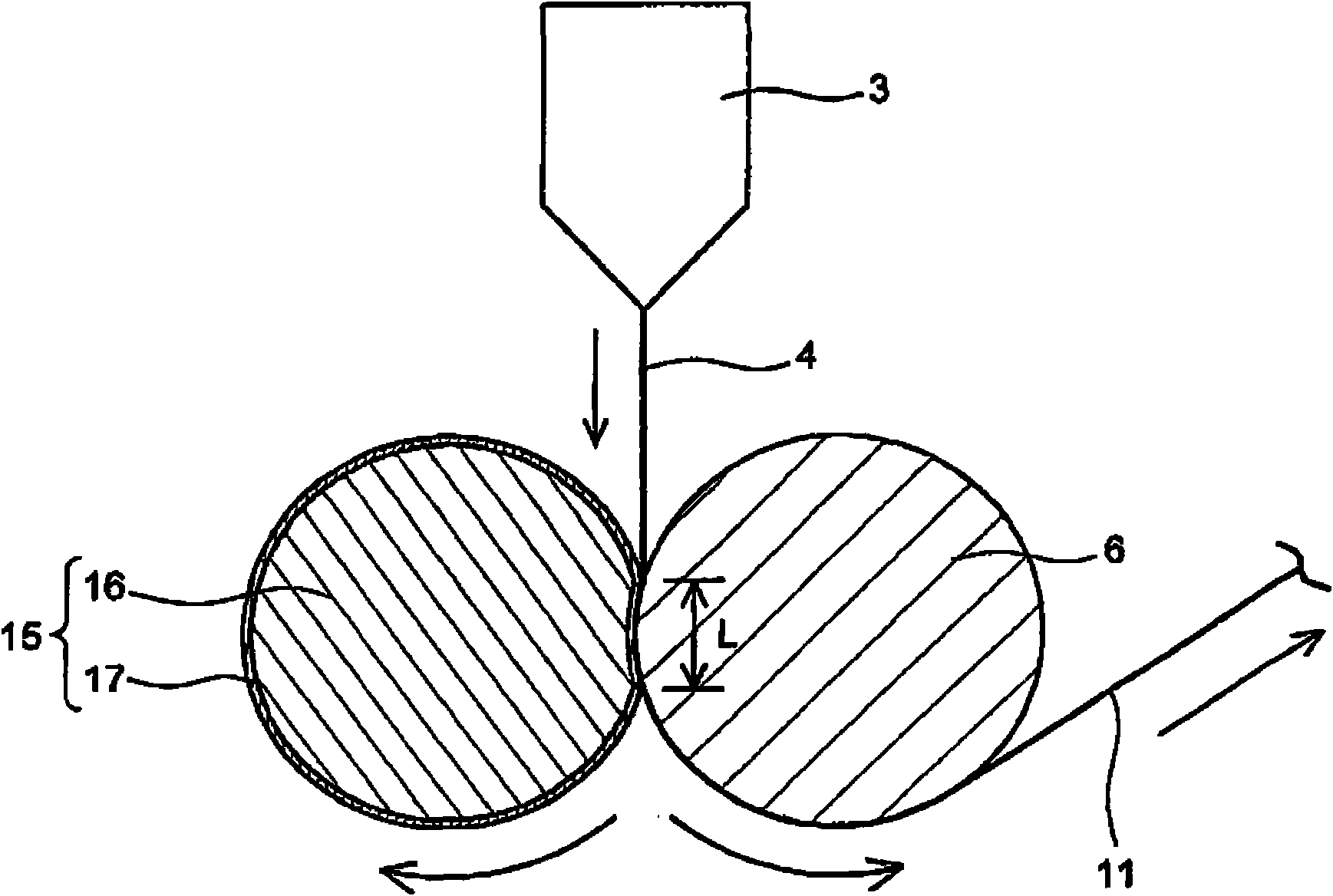Light conducting plate
A technology of light guide plate and resin plate, which is applied in the field of light guide plate and can solve problems such as inability to process well
- Summary
- Abstract
- Description
- Claims
- Application Information
AI Technical Summary
Problems solved by technology
Method used
Image
Examples
Embodiment 1~6、8 and comparative example 1~4
[0146]
[0147] The resins of the types shown in Table 1 were melt-kneaded with the extruder 1 and supplied in the order of the feed block and the die 3 . Next, the molten thermoplastic resin 4 extruded from the die 3 was formed into a film while being sandwiched between the first roll and the second roll constituted by the rolls shown in Table 1, and an extruded resin sheet having the thickness shown in Table 1 was obtained. In addition, the "1st roll surface temperature" and "2nd roll surface temperature" in Table 1 are the values of the actual roll surface temperature.
Embodiment 7
[0149] As the resin layer A, resins of the types shown in Table 1 were melt-kneaded with the extruder 1 and supplied to the feed block. On the other hand, as the resin layer B, resins of the types shown in Table 1 were melt-kneaded with the extruder 2 and supplied to the feed block. Coextrusion molding is performed in such a way that the resin layer A supplied to the feed block from the extruder 1 becomes the main layer, and the resin layer B supplied to the feed block from the extruder 2 becomes the surface layer (one side / upper side) .
[0150] Next, while the molten thermoplastic resin 4 extruded from the die 3 was sandwiched between the first roll and the second roll constituted by the rolls shown in Table 1, a film was formed so that the resin layer B was in contact with the second roll, An extruded resin sheet having a two-layer structure having the thickness shown in Table 1 was obtained. In addition, "thickness" in extruder 1, 2 in Table 1 shows each thickness of res...
Embodiment 9 and comparative example 5
[0152] As the resin layer A, resins of the types shown in Table 1 were melt-kneaded with the extruder 1, and supplied to the feed block. On the other hand, as the resin layer B, resins of the types shown in Table 1 were melt-kneaded with the extruder 2, and supplied to the feed block. Coextrusion molding was carried out in such a manner that the resin layer A supplied to the feed block from the extruder 1 became the middle layer, and the resin layer B supplied to the feed block from the extruder 2 became both surface layers.
[0153] Next, the molten thermoplastic resin 4 extruded from the die 3 was formed into a film while being sandwiched between the first roll and the second roll constituted by the rolls shown in Table 1, and an extruded film composed of a three-layer structure having the thickness shown in Table 1 was obtained. Take out the resin board.
[0154]
PUM
| Property | Measurement | Unit |
|---|---|---|
| Thickness | aaaaa | aaaaa |
| In-plane retardation | aaaaa | aaaaa |
Abstract
Description
Claims
Application Information
 Login to View More
Login to View More - R&D
- Intellectual Property
- Life Sciences
- Materials
- Tech Scout
- Unparalleled Data Quality
- Higher Quality Content
- 60% Fewer Hallucinations
Browse by: Latest US Patents, China's latest patents, Technical Efficacy Thesaurus, Application Domain, Technology Topic, Popular Technical Reports.
© 2025 PatSnap. All rights reserved.Legal|Privacy policy|Modern Slavery Act Transparency Statement|Sitemap|About US| Contact US: help@patsnap.com



